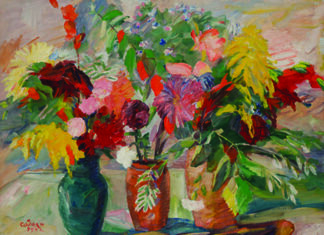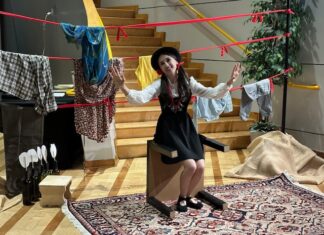 By Arthur Hagopian
By Arthur Hagopian
JERUSALEM — Since early childhood, Sarkis Antikajian had nurtured one paramount dream: to paint, to be an artist, to give expression to the creative urges in him by metamorphosing them into landscapes, portraits, still lifes.
But the fact that he was growing up in a part of the world where art took last place to the struggle for survival, did not prove easily conducive to the realization of that dream. So he had to bide his time and be satisfied with continuing to study, hope and plan.
He was born in the Jordanian capital of Amman, but spent part of the formative years of his childhood across the (Jordan) river, in Jerusalem.
Walking along the cobblestoned alleys of the Armenian Quarter of the Old City, Antikajian absorbed the unique ambience of the holy precinct, his keen eyes taking detailed note of the rarefied palette of the gold and copper of the ancient walls, the virginal blue of the skies, the red sunsets over the domes, minarets and towers.
It was a heady education, an experience he would later translate into his prolific output as he experimented with the immense variety of artistic expression, a lifelong delight and accomplishment that resulted in a formidable portfolio of paintings, and a book, evidence of an artist who is “extraordinary gifted and versatile, equally facile in several genres from impressionism, expressionism to nonobjective or abstract art,” in the words of Shannon Ray, director of the Lawrence Gallery in Oregon where Antikajian now lives.









